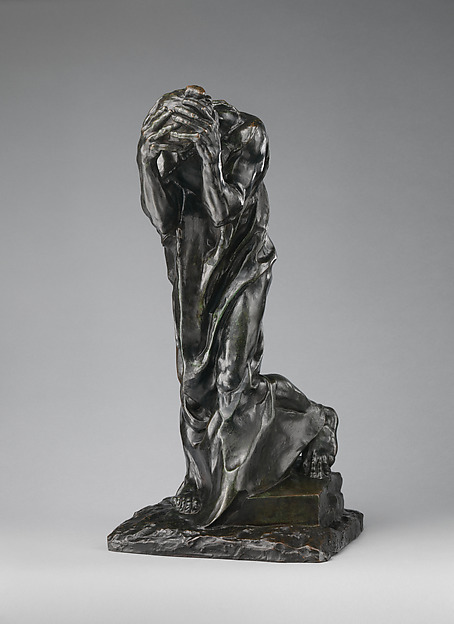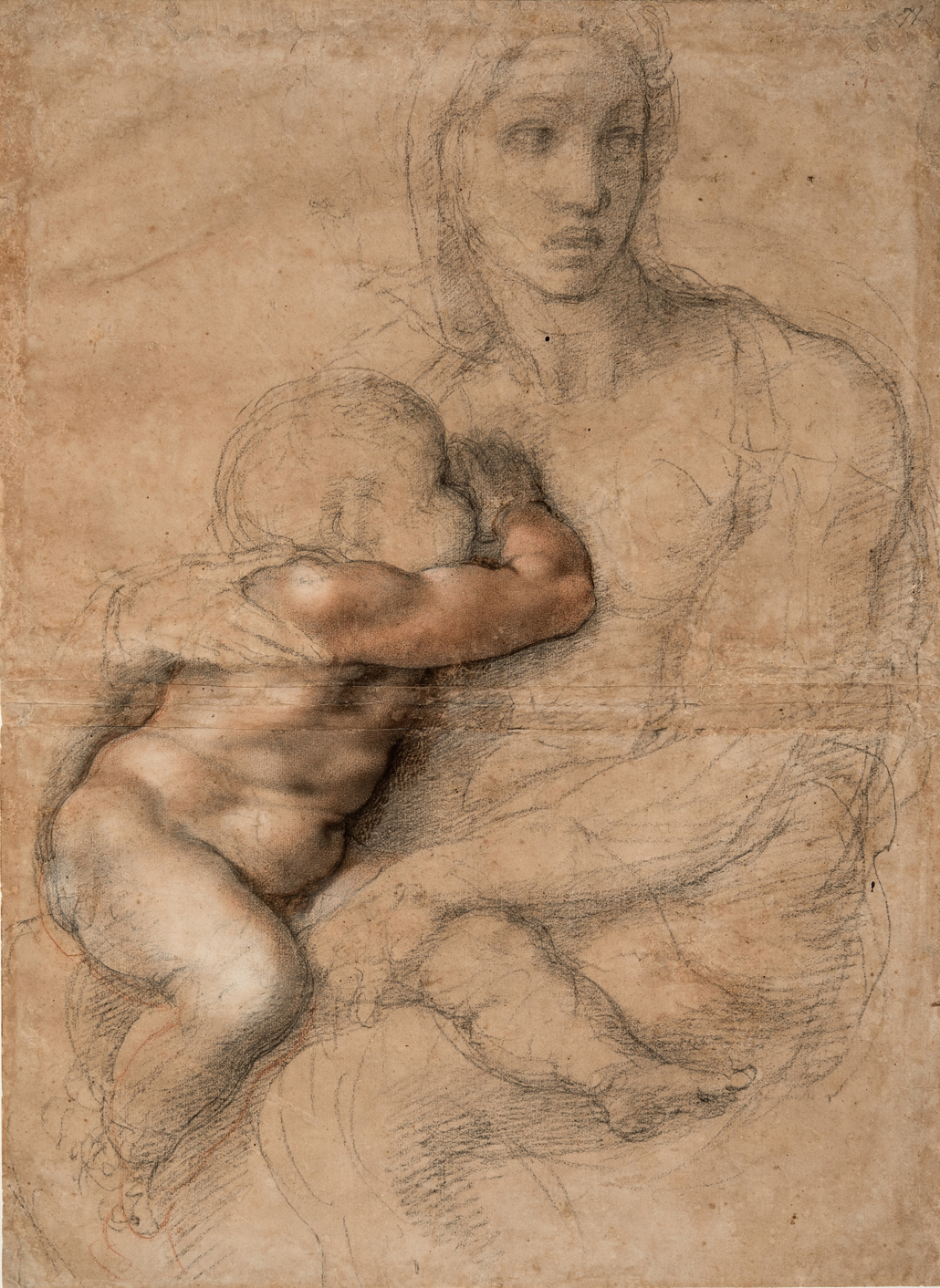
The Weeping Burgher
By looking over both the artworks of Rodin and Michelangelo, subtle differences can be seen through careful observation. As I looked over the sculptures of Rodin, I noticed that his works of art focused on some state of the human body in connection with emotions. Rodin is able to portray emotion in his sculptures by giving states of being a recognizable pose. Take for example “The Weeping Burgher,” in which Rodin decided to portray a character in grief. The way Rodin accentuated the feeling of grief in this particular piece is by having the figure cover its face in distress and arched slightly forward as if to show that the sadness it feels is too much to bear. Another example of how Rodin plays with emotional representation through his work can be seen in “The Thinker,” which shows a male figure in a position that suggests he is in deep through about an issue. In this case, Roding has the figure in a sitting position with his body leaned forward and his head resting on his hand made into a fist. The thinker is a popular sculpture of Rodin and it helps to show the way in which he portrays emotion through his work.

The Thinker
One feature I noticed in Michelangelo’s work that is different from Rodin is his practice of exaggerating the physical features of the human body. Michelangelo add a touch of masculinity in his work by accentuating the muscular tone of the subjects he focuses on. In the unfinished sketch of “Madonna and Child,” Michelangelo portrayed the faces of both Madonna and the baby with light physical features. Their skin is smooth and free of harsh distinguishable lines. The bodies of these subjects, nevertheless, add significant contrast to the sketch. Madonna and even the child are showcased with heavy muscular tones that are not usually seen in other sketches. The muscular focus of this sketch perhaps is meant to develop the idea that the women and the child, despite the fragility associated with their faces, are strong and fierce characters.

Madonna and Child

Leave a Reply
You must be logged in to post a comment.